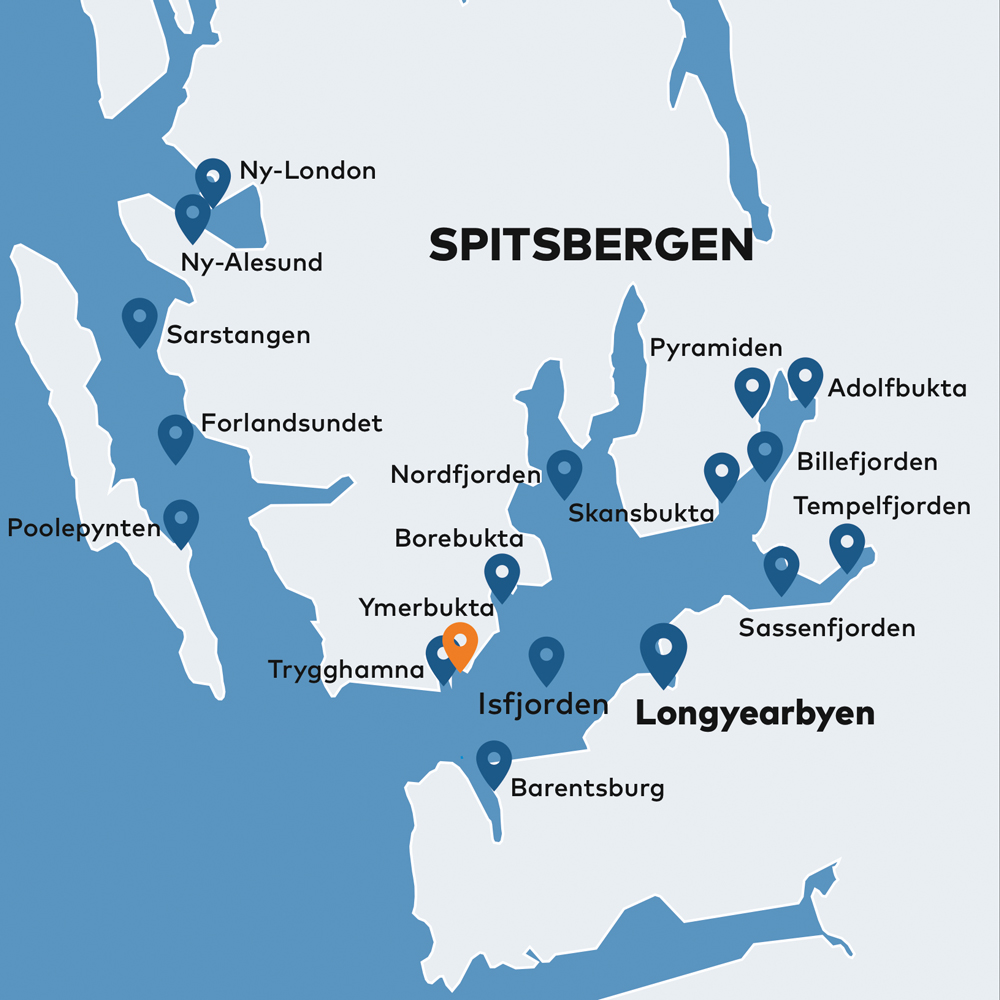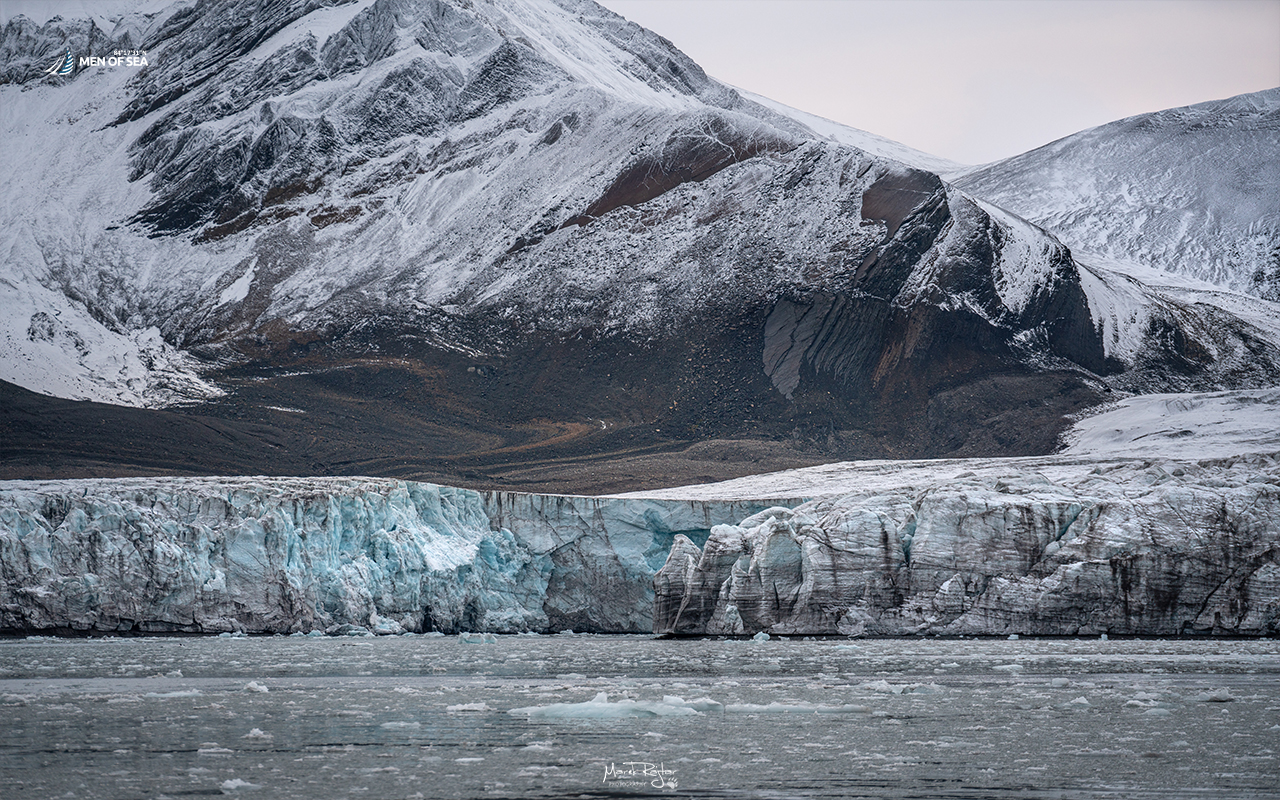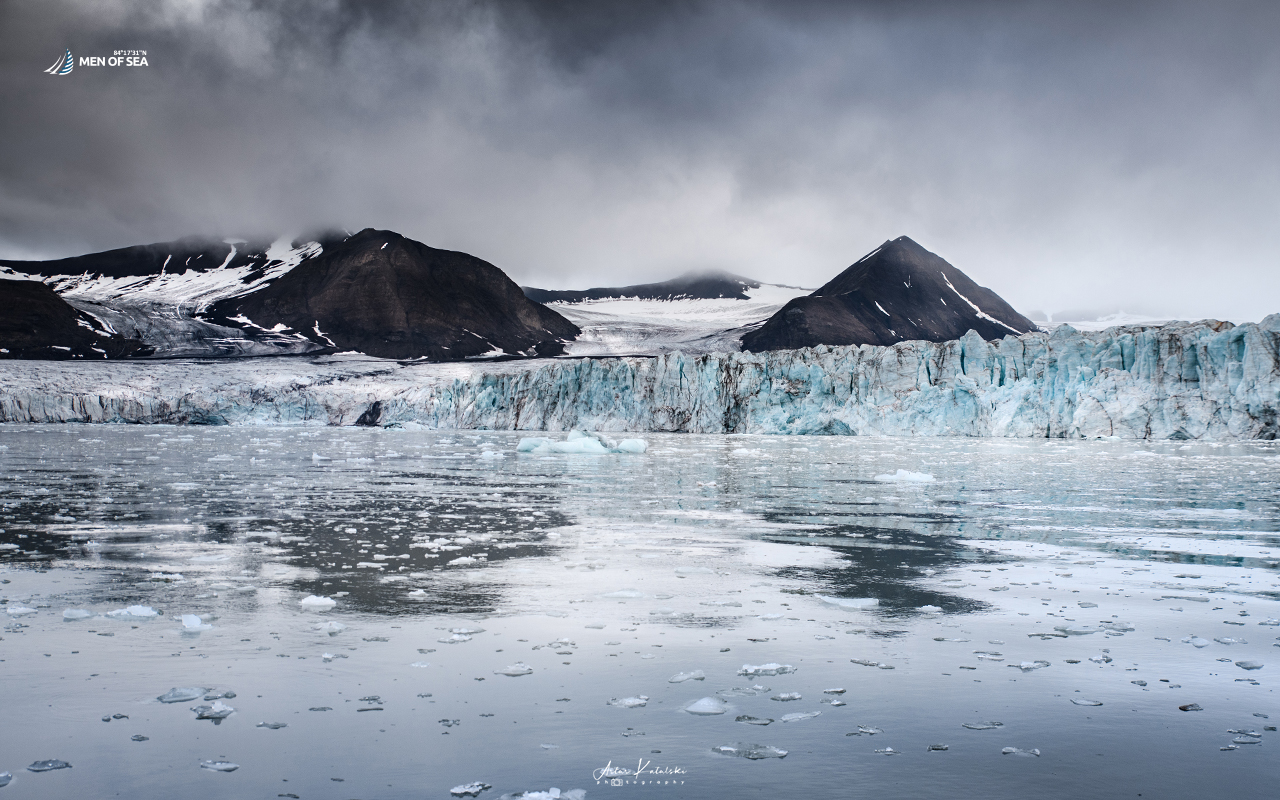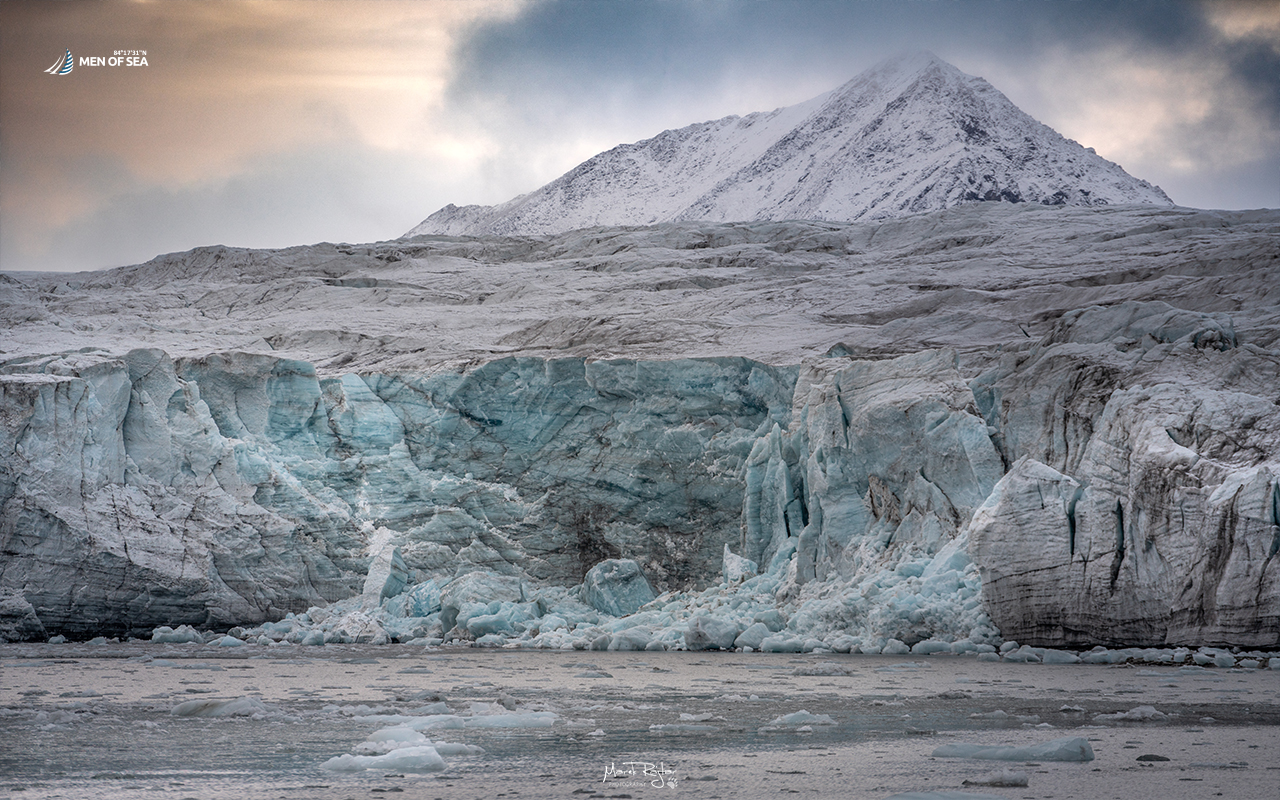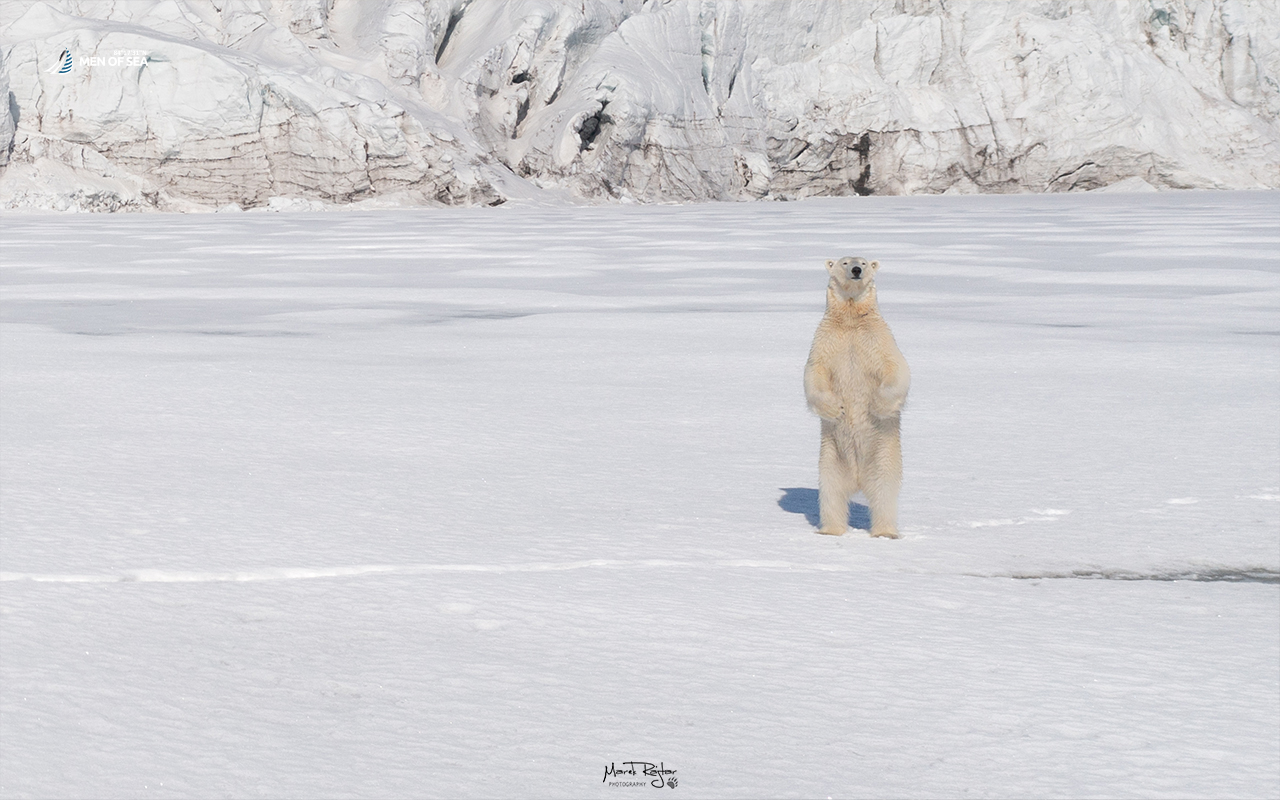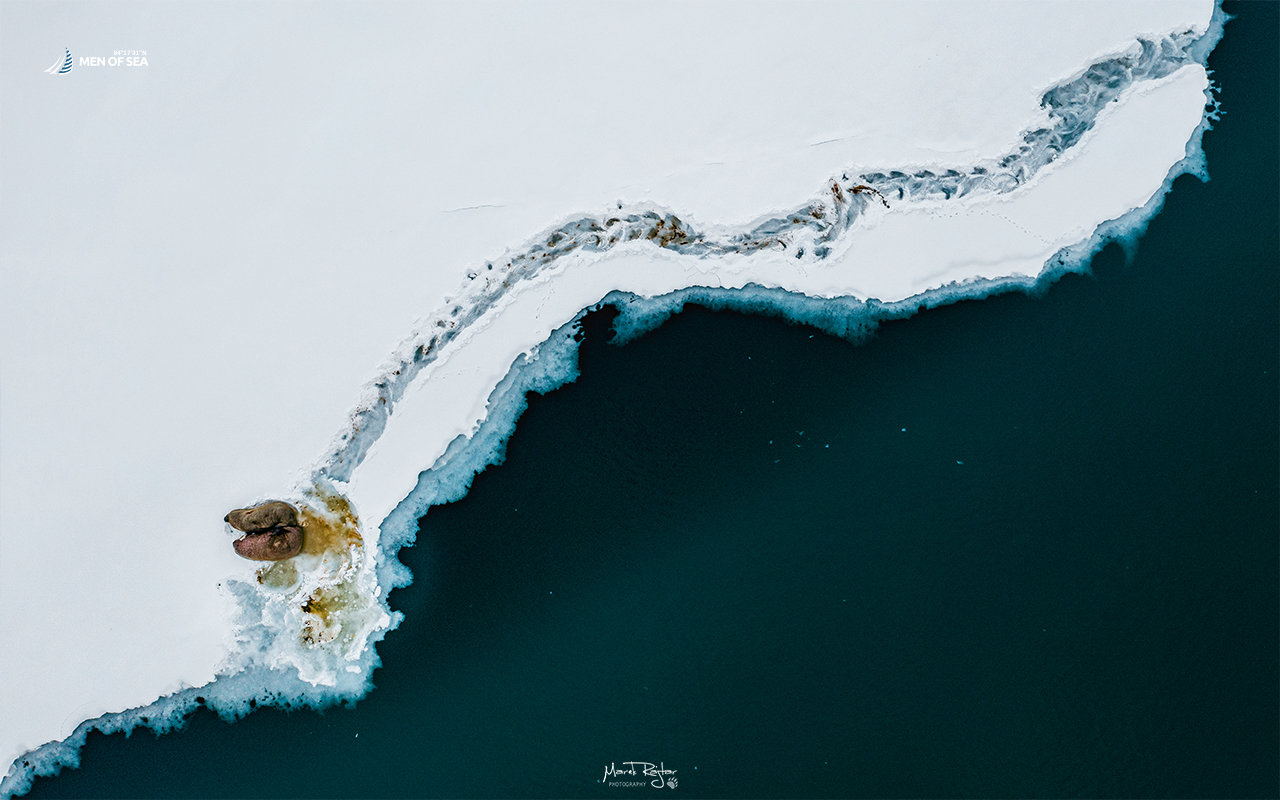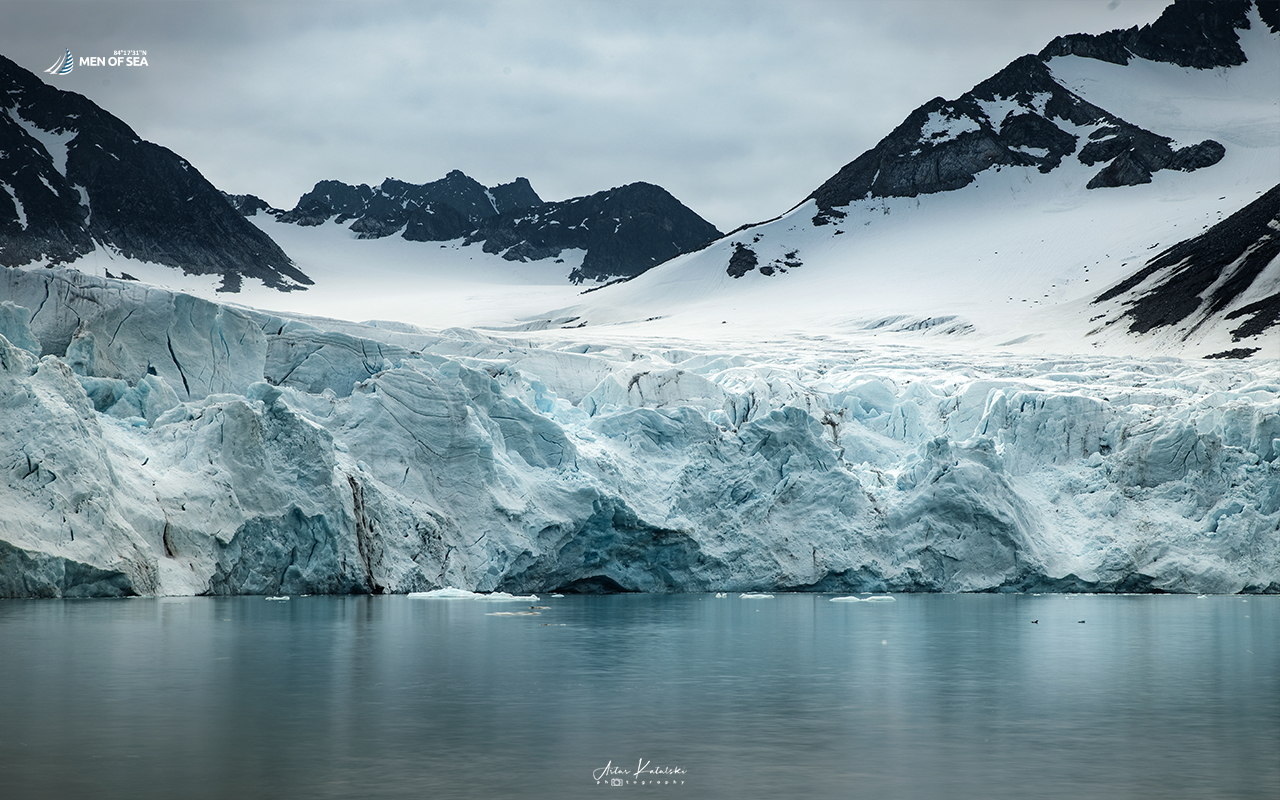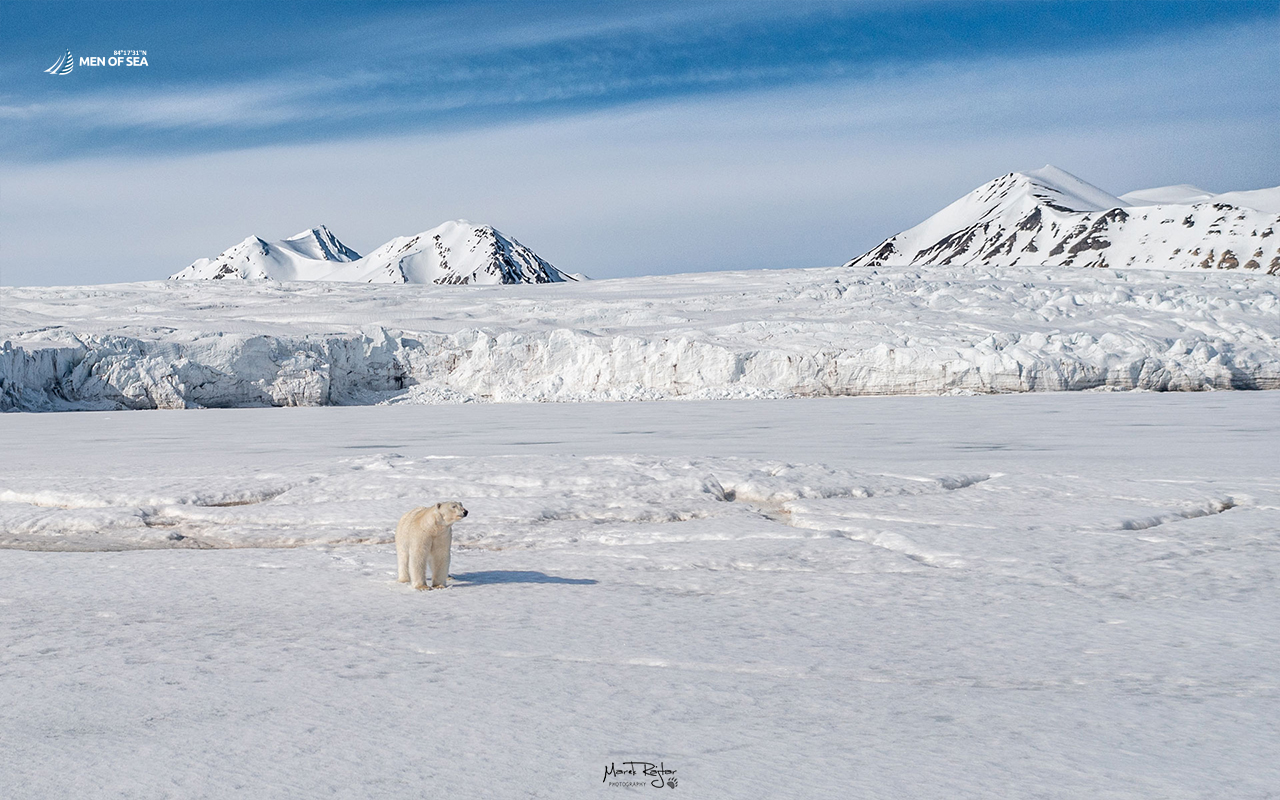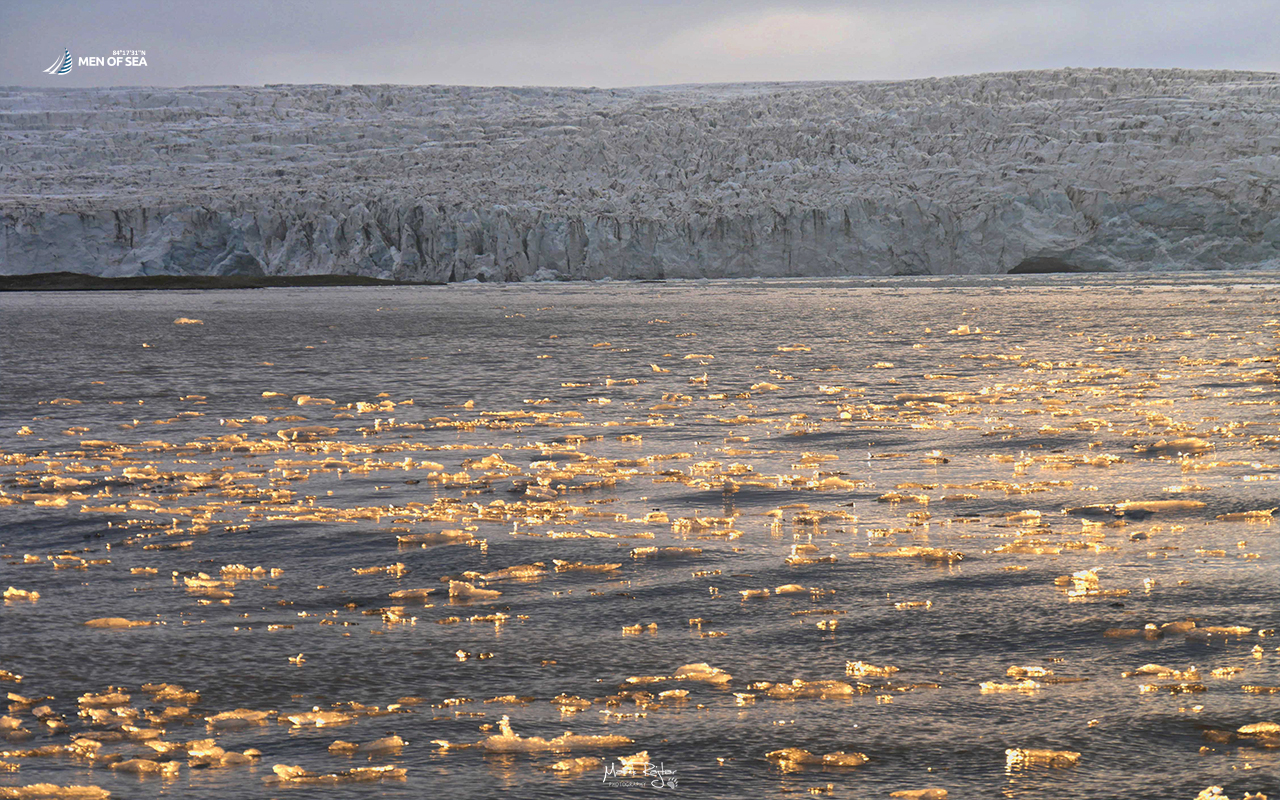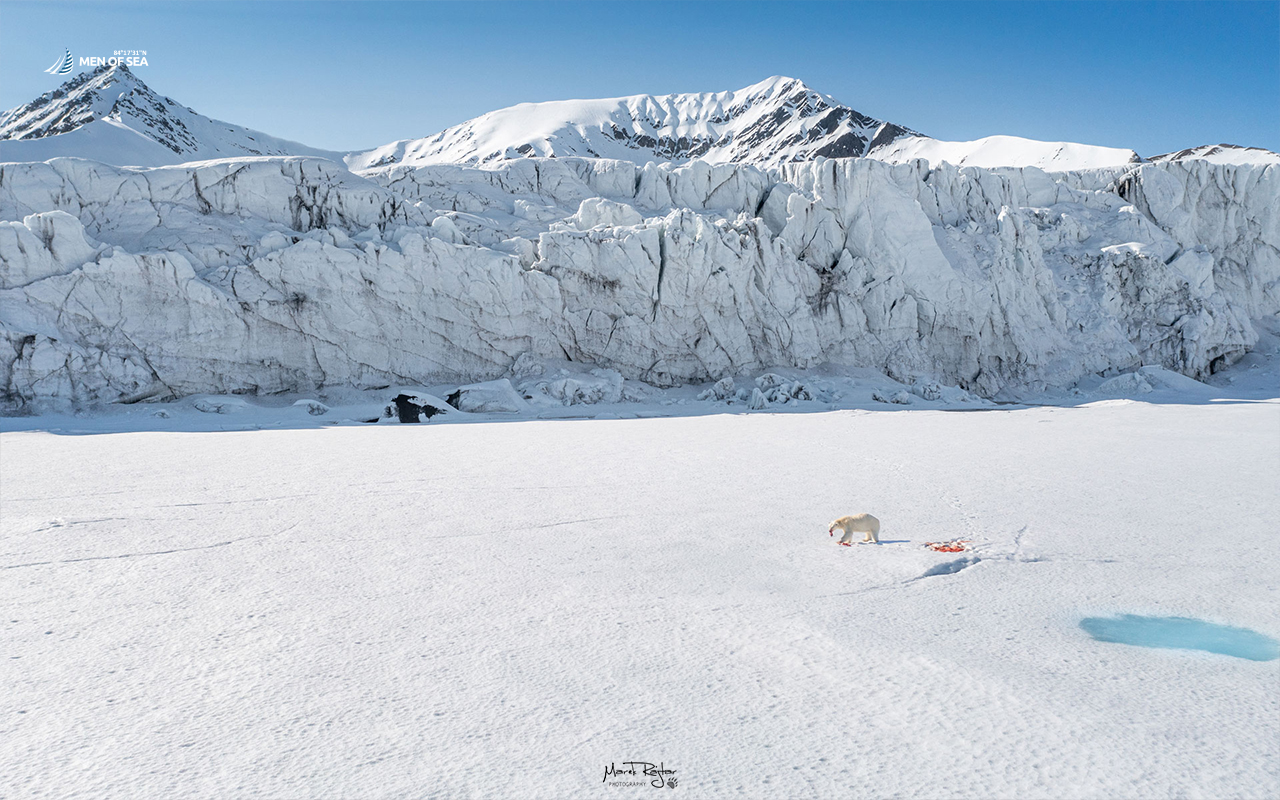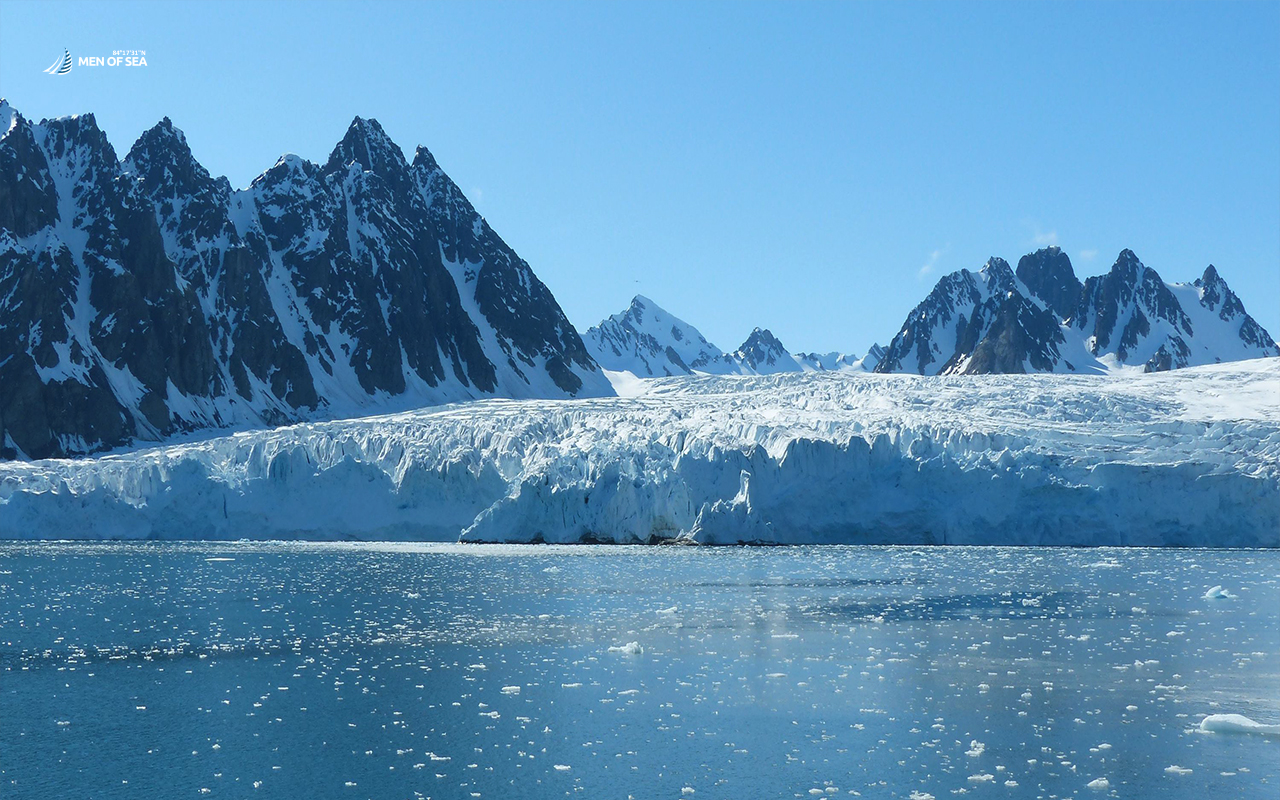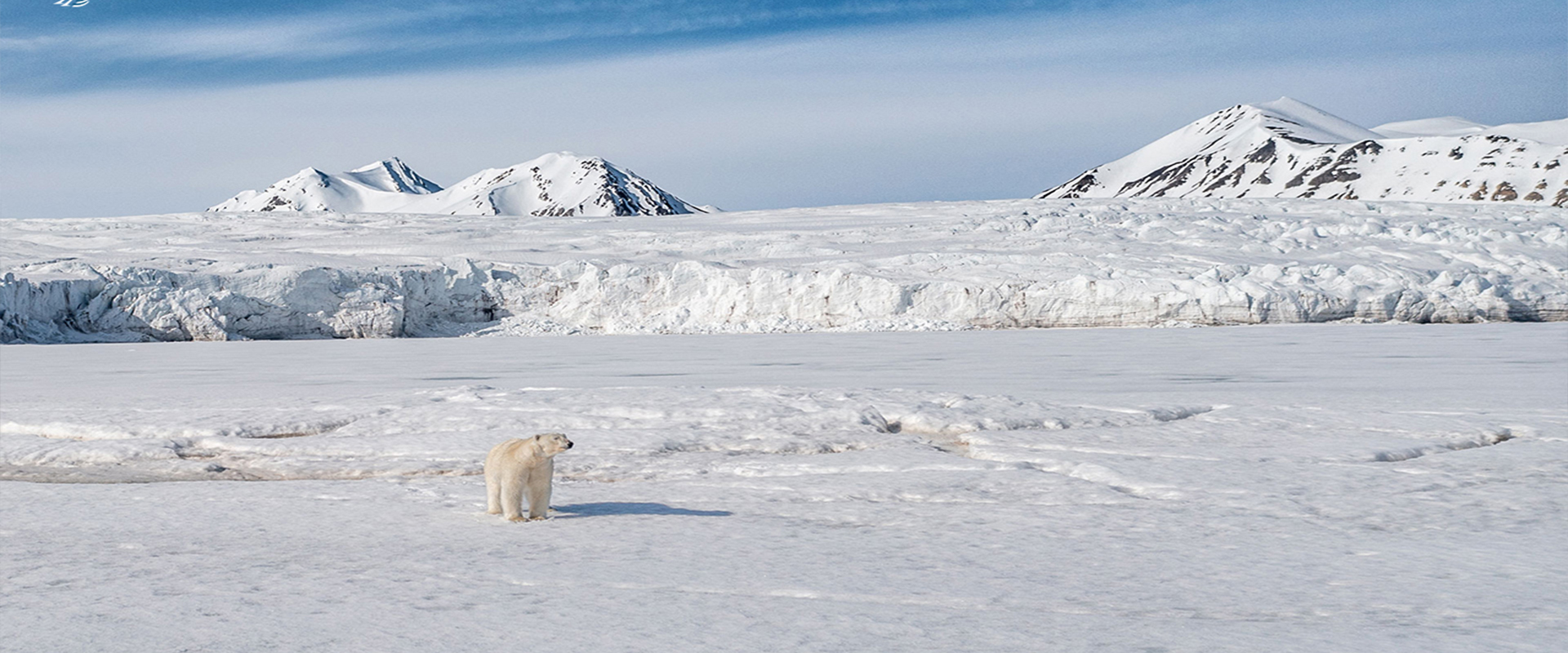
YMERBUKTA
An icy bay with a Slavic history
BASIC INFORMATION
Ymerbukta is a bay situated in the central part of Isfjorden, with the six-kilometer-long Esmarkbreen glacier descending into it. The bay is often covered in ice and the views of the calving glacier are memorable for a long time. It is also a starting point for ski-touring expeditions.
The place is also interesting for historical reasons – the Pomeranians left their traces here.
The Pomeranians were a Slavic people, first mentioned in the 12th century. They originally lived in the area of Novgorod and north-western Russia. Due to the climate, they were accustomed to living in harsh conditions. Associated with the sea, fishing and hunting, they often grazed reindeer in the tundra regions. In the 18th century, they traded extensively in corn and fish with northern Norway, and the close relationship resulted in the creation of a special Russian-Norwegian language, Russenorsk, which was in use until the 1920s.
It is not known exactly when the Pomeranians arrived in Svalbard, but traces of their presence from as early as the 19th century can still be observed today. Their houses are easily distinguishable from those of Norwegian whalers. The Norwegians primarily built single, small huts, while the Pomeranians, from the 18th century onwards, created spacious homes that could accommodate up to 20 people. The homestead often included the dwelling itself, a storehouse, a smithy and a sauna. The arrangement of planks in the walls and the tongue-and-groove joints of the elements were also characteristic. Unlike the whalers, who installed metal furnaces, the Pomeranians built their furnaces out of brick, the remains of which are still visible.
On the west side of Isfjorden the remains of four Pomeranian settlements can be found. One of these is located in Ymerbukta. It is situated on a moraine, at an altitude of about 4.2 m above sea level, where the remains of three buildings have been discovered and about 2,000 everyday objects have been found. Two musical instruments are noteworthy – a wooden horn and the box of a Russian three-stringed instrument called “gudok”.
We sail into Ymerbukta so that we can admire the beautiful, spreading glacier with its large front. In May and June, when much of the bay is still frozen, seals come here and there is a good chance of seeing a polar bear.
Trips connected with YMERBUKTA
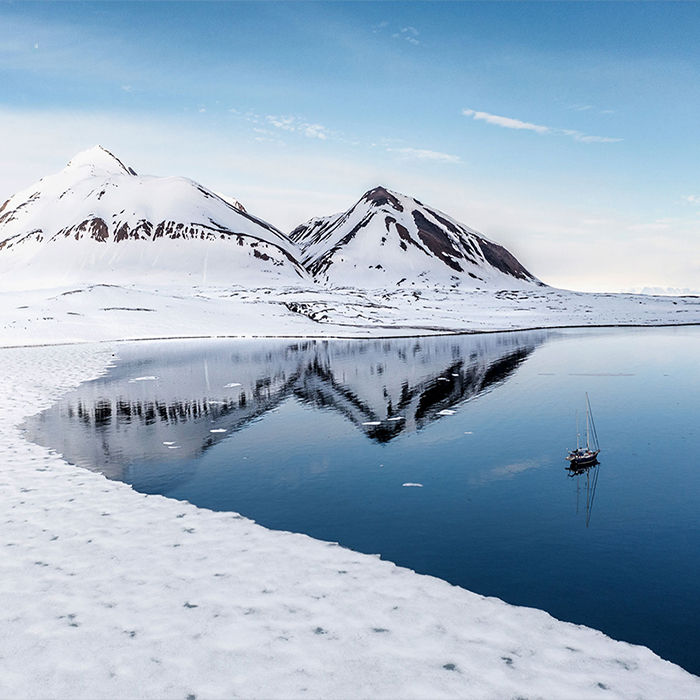
Across the Arctic Seas

12 dni
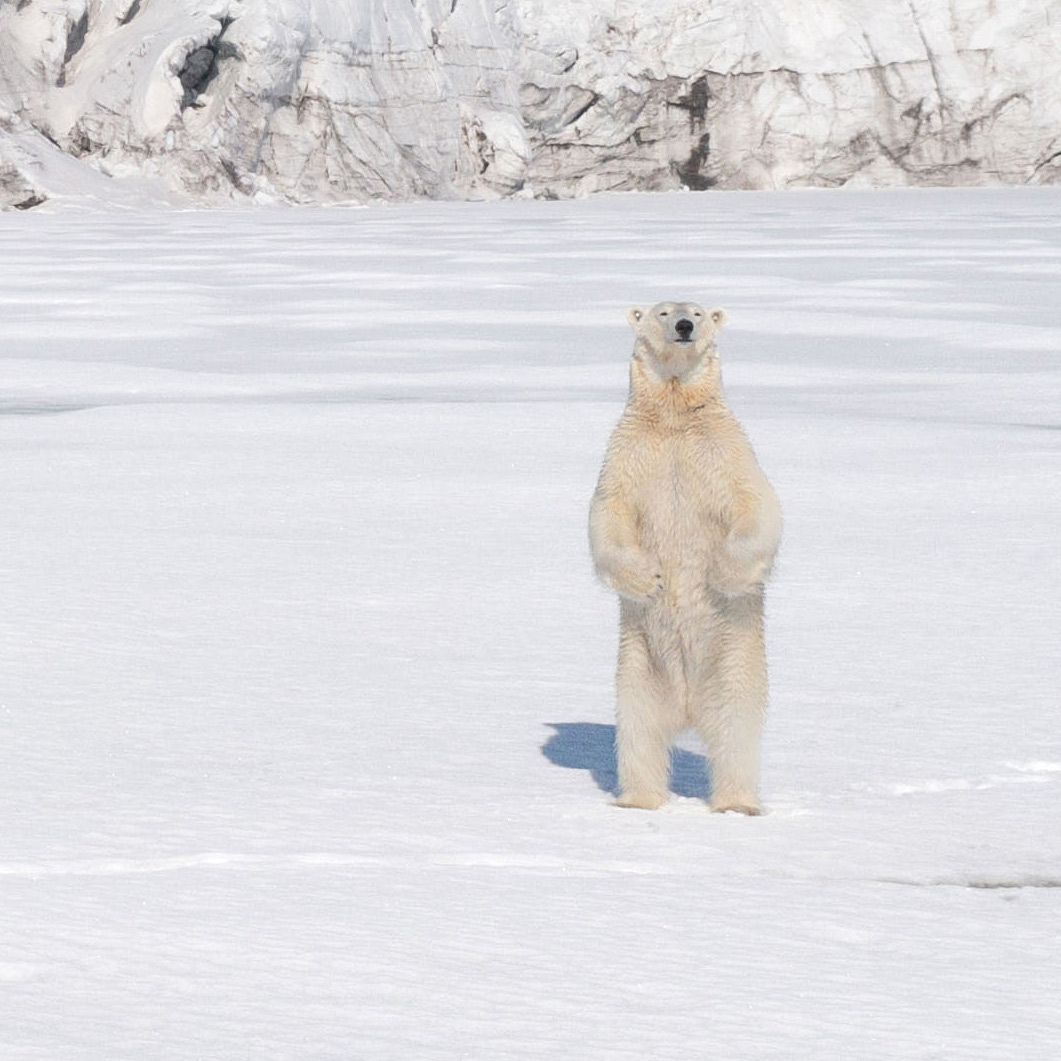
Animals of Svalbard Photo Safari #1

8 dni

Animals of Svalbard Photo Safari #2

8 dni

Animals of Svalbard Photo Safari #3

8 dni
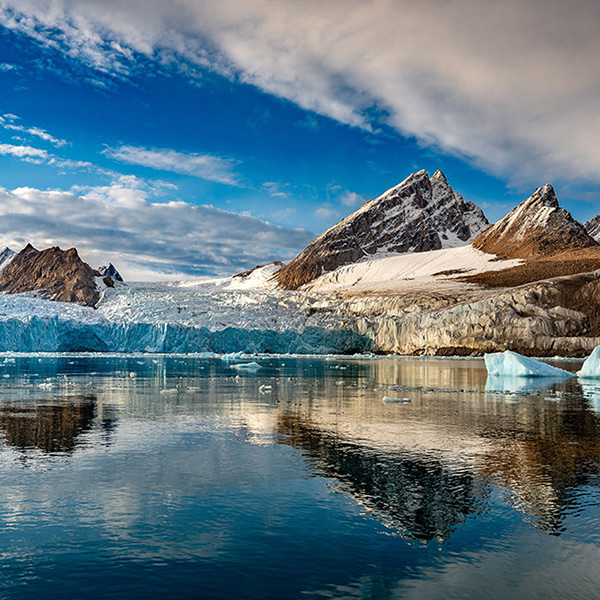
Spitsbergen in a week #5

8 dni

Spitsbergen in a week #6

8 dni

Spitsbergen in a week #8

8 dni
